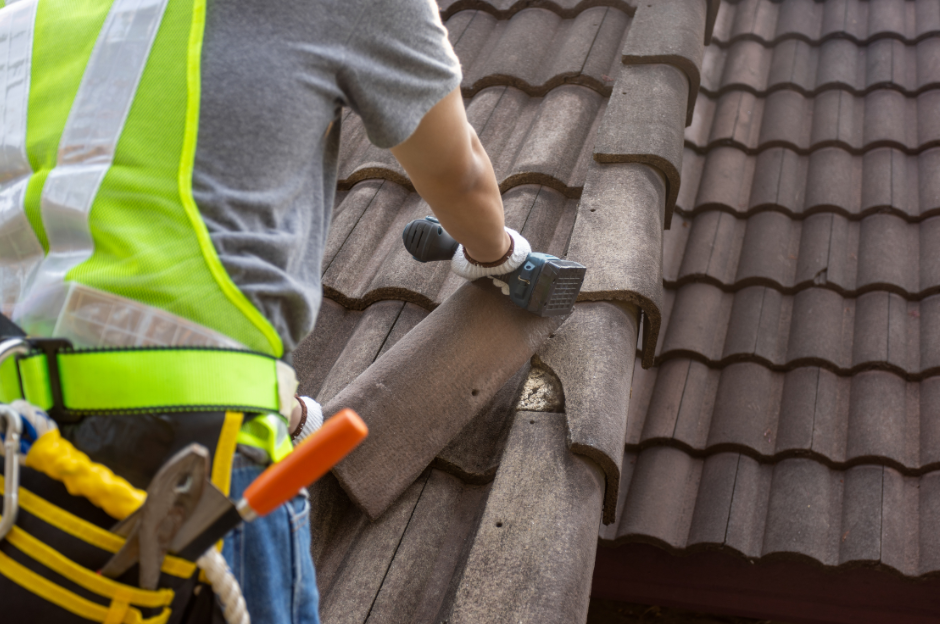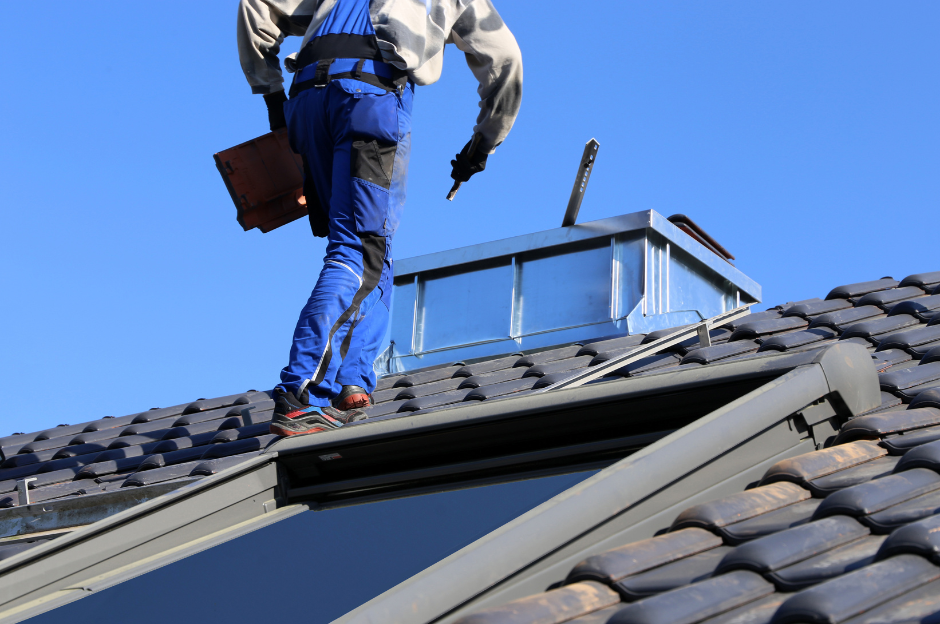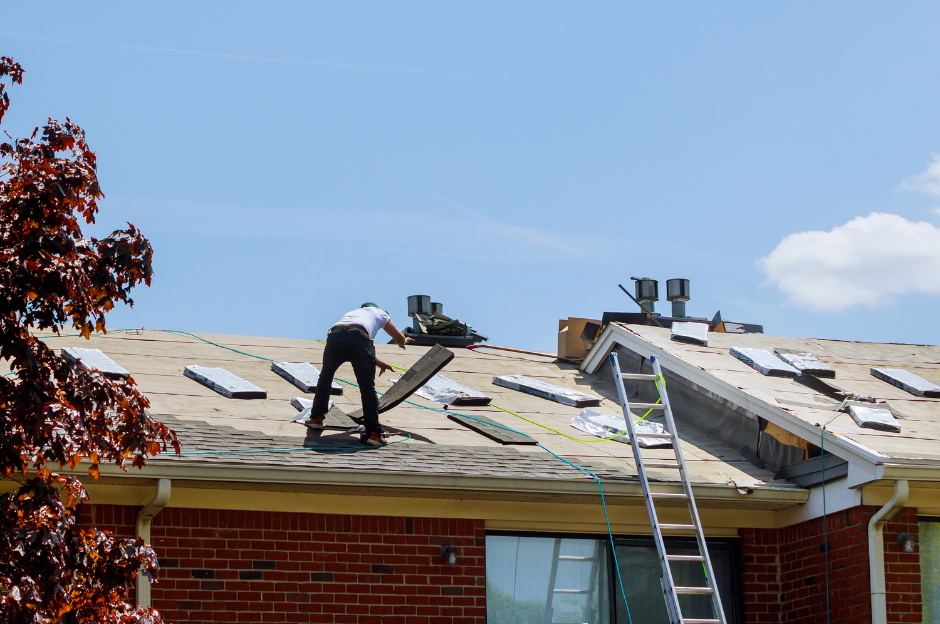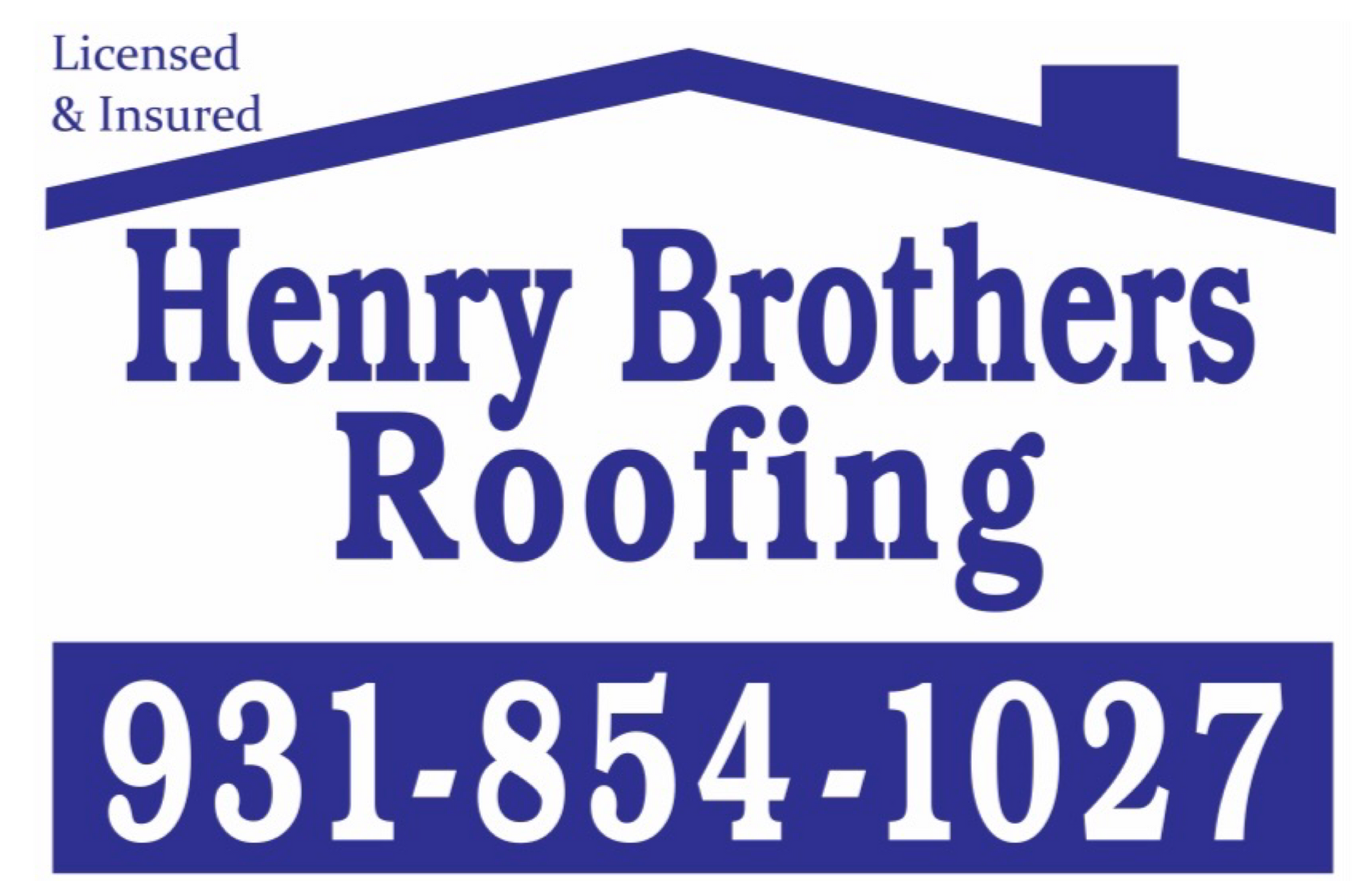Roofing Solutions 101: A Comprehensive Guide to Understanding Your Options
April 5, 2024

Your roof is not only a crucial structural component of your home but also a vital line of defense against the elements. When it comes to roofing solutions, homeowners are faced with a plethora of options, each with its unique characteristics, advantages, and considerations. Understanding the various roofing materials, styles, and installation methods is essential for making informed decisions about the best solution for your home. In this comprehensive guide, we'll explore the fundamentals of roofing solutions, providing insights into different materials, styles, and factors to consider when choosing the right roofing option for your needs.
Asphalt Shingles:
Asphalt shingles are the most common roofing material used in residential construction, known for their affordability, durability, and ease of installation. Available in a wide range of colors and styles, asphalt shingles offer versatility and aesthetic appeal. Key features of asphalt shingles include:
Affordability: Asphalt shingles are cost-effective compared to other roofing materials, making them an attractive option for budget-conscious homeowners.
Durability: High-quality asphalt shingles can offer excellent durability and weather resistance, with warranties ranging from 20 to 30 years or more.
Variety: Asphalt shingles come in a variety of styles, including three-tab shingles, architectural shingles, and designer shingles, allowing homeowners to customize the look of their roof.
Easy Installation: Asphalt shingles are relatively lightweight and easy to install, reducing labor costs and installation time.
Metal Roofing:
Metal roofing has gained popularity in recent years due to its longevity, energy efficiency, and modern aesthetic. Made from materials such as steel, aluminum, or copper, metal roofs offer exceptional durability and weather resistance. Key features of metal roofing include:
Longevity: Metal roofs have a long lifespan, often lasting 50 years or more with proper maintenance, making them a long-term investment for homeowners.
Energy Efficiency: Metal roofs reflect solar heat, reducing cooling costs in hot climates and improving energy efficiency year-round.
Variety: Metal roofing comes in a variety of styles, including standing seam, corrugated panels, and metal tiles, offering versatility and design options for homeowners.
Resistance to Elements: Metal roofs are resistant to fire, wind, hail, and moisture, providing superior protection against extreme weather conditions.
Wood Shake and Shingle Roofing:
Wood shake and shingle roofing offer a natural and rustic look that complements traditional and contemporary architectural styles. Made from cedar, redwood, or other hardwoods, wood roofs add warmth and character to homes. Key features of wood shake and shingle roofing include:
Aesthetic Appeal: Wood roofs have a timeless and rustic appearance, enhancing the curb appeal and charm of homes.
Insulation: Wood roofs provide natural insulation, helping regulate indoor temperatures and reducing energy consumption.
Sustainability: Wood shake and shingle roofing is an eco-friendly option, as wood is a renewable and biodegradable material.
Maintenance: Wood roofs require regular maintenance, including cleaning, sealing, and periodic repairs, to prevent rot, mold, and insect damage.
Slate Roofing:
Slate roofing is renowned for its elegance, durability, and longevity, making it a premium roofing option for upscale homes and historic buildings. Quarried from natural stone, slate roofs offer unmatched beauty and performance. Key features of slate roofing include:
Durability: Slate roofs are incredibly durable and can last 100 years or more with proper maintenance, making them a lifetime investment for homeowners.
Fire Resistance: Slate is a non-combustible material, offering superior fire resistance and protection for homes in fire-prone areas.
Aesthetic Appeal: Slate roofs have a distinctive appearance with rich colors, textures, and natural variations, adding sophistication and prestige to any home.
Low Maintenance: Slate roofs require minimal maintenance, as they are resistant to mold, mildew, rot, and insect damage, making them ideal for homeowners seeking a low-maintenance roofing option.
Clay and Concrete Tile Roofing:
Clay and concrete tile roofing is renowned for its durability, longevity, and architectural appeal, making it a popular choice for Mediterranean, Spanish, and Southwestern-style homes. Key features of clay and concrete tile roofing include:
Durability: Clay and concrete tiles are highly durable and can last 50 years or more with proper maintenance, providing long-term protection and value for homeowners.
Aesthetic Variety: Clay and concrete tiles come in a wide range of shapes, colors, and textures, allowing homeowners to customize the look of their roof to suit their architectural style and personal preferences.
Energy Efficiency: Clay and concrete tiles provide natural insulation and thermal mass, helping regulate indoor temperatures and reduce energy consumption for heating and cooling.
Resistance to Elements: Clay and concrete tiles are resistant to fire, wind, hail, and moisture, providing excellent protection against extreme weather conditions.
Considerations When Choosing a Roofing Solution:
Climate: Consider the climate and weather conditions in your area when choosing a roofing material. Select a material that offers durability and weather resistance against local climate factors such as rain, snow, wind, heat, and humidity.
Budget: Determine your budget for roofing materials, installation, and maintenance costs. Compare the costs and long-term value of different roofing options to find a solution that fits your budget and provides the best return on investment.
Aesthetic Preferences: Consider your aesthetic preferences and architectural style when selecting a roofing material. Choose a material that enhances the curb appeal and character of your home while complementing its design and surroundings.
Longevity and Maintenance: Evaluate the longevity and maintenance requirements of different roofing materials. Choose a material that offers durability and longevity with minimal maintenance to ensure lasting performance and value for your home.
Energy Efficiency: Consider the energy efficiency and environmental impact of roofing materials. Select a material that provides natural insulation, reflects solar heat, and contributes to energy savings and sustainability.
Conclusion:
Choosing the right roofing solution for your home is a significant decision that requires careful consideration of various factors, including material, style, durability, and cost. By understanding the different roofing options available and their respective characteristics, homeowners can make informed decisions that meet their needs, preferences, and budget. Whether you opt for asphalt shingles, metal roofing, wood shake, slate, or clay tiles, investing in a quality roof is essential for protecting your home, enhancing its curb appeal, and ensuring long-term value and satisfaction. Consult with roofing professionals to explore your options and find the perfect roofing solution for your home.
Henry Brothers Blog

Multi-family buildings pose unique challenges for roofing—requiring durable, efficient, and cost-effective solutions that serve multiple households simultaneously. Selecting the right system and partner can significantly impact long-term maintenance and energy bills. Common Roofing Challenges in Multi-Family Properties Large surface areas Multiple penetrations (vents, HVAC units) Noise and disruption during installation High foot traffic for maintenance Energy efficiency Efficient Roofing Materials TPO (Thermoplastic Polyolefin): Lightweight, reflective, and energy-efficient. Ideal for flat or low-slope roofs. Modified Bitumen: Offers durability and weather resistance. Works well for larger structures. Metal Roofing: Long-lasting and low-maintenance. Higher upfront costs but excellent ROI. Asphalt Shingles: Budget-friendly and easy to repair. Better for pitched multi-family homes. Affordability Strategies Bulk Purchasing Discounts: Roofers often offer lower rates for large-scale projects. Energy Rebates and Tax Credits: Cool roofing materials may qualify for incentives. Roof Coatings: Extend lifespan and defer full replacements. Preventive Maintenance Plans: Regular inspections reduce major repair costs. Partnering with the Right Contractor Choose a roofing contractor experienced in multi-family dwellings. Look for: References from similar projects Warranty offerings Insurance and licensing Clear timelines and communication protocols

Your roof is one of the most defining features of your home’s architecture. A well-designed roof complements the style, era, and character of your house, enhancing both curb appeal and value. Whether you own a modern home, a Victorian masterpiece, or a Mediterranean villa, choosing the right roofing materials and design is essential. This article explores custom roofing solutions for different architectural styles, ensuring your roof is both aesthetic and functional. 1. Why Custom Roofing Matters A one-size-fits-all approach doesn’t work for roofing. Here's why customization is key: 🏡 Preserves Architectural Integrity The roof should match the home's era and design. A poorly chosen roof can clash with the architecture and reduce property value. 💰 Boosts Home Value & Curb Appeal A well-matched roof enhances visual appeal, making your home stand out. Homebuyers prefer houses with roofs that fit the overall design. 🌦 Enhances Durability & Efficiency Custom roofing accounts for climate, slope, and insulation. Choosing the right materials ensures longer roof life and energy efficiency. 2. Best Roofing Materials for Different Architectural Styles 🏗 Modern & Contemporary Homes Modern architecture focuses on clean lines, minimalism, and energy efficiency. Best Roofing Options: ✅ Flat Roofs – Achieve a sleek, contemporary look. ✅ Metal Roofing – Durable and complements modern aesthetics. ✅ Green Roofs – Eco-friendly and visually striking. ✅ Solar Panels – Integrate renewable energy solutions. 🏰 Victorian & Gothic Revival Homes These homes have steep-pitched roofs, turrets, and elaborate detailing. Best Roofing Options: ✅ Slate Tiles – Classic, long-lasting, and historically accurate. ✅ Wood Shingles – Adds charm and natural beauty. ✅ Decorative Metal Accents – Enhances ornate Victorian designs. 🏝 Mediterranean & Spanish-Style Homes Inspired by European coastal homes, these feature stucco walls and curved archways. Best Roofing Options: ✅ Clay or Terracotta Tiles – Traditional, weather-resistant, and elegant. ✅ Concrete Tiles – Durable and available in various textures and colors. ✅ Synthetic Spanish Tiles – Modern, lightweight alternatives with classic appeal. 🌲 Rustic & Cabin-Style Homes These homes emphasize natural materials and a cozy aesthetic. Best Roofing Options: ✅ Wood Shakes – Blends seamlessly with wooded surroundings. ✅ Metal Roofing (Rustic Finish) – Durable with a weathered, natural look. ✅ Green Roofs – Enhances sustainability and insulation. 🏡 Colonial & Traditional Homes These timeless homes focus on symmetry and classic proportions. Best Roofing Options: ✅ Asphalt Shingles – Affordable and available in classic shades. ✅ Slate Roofing – Elegant and historically accurate. ✅ Copper or Metal Accents – Enhances historic charm. 🏛 Mid-Century Modern Homes This style features low-sloped roofs, large windows, and open spaces. Best Roofing Options: ✅ Flat or Low-Slope Roofs – Clean, minimalistic aesthetic. ✅ Rubber or Membrane Roofing – Ideal for low-pitch roofs. ✅ Green or Living Roofs – Complements eco-conscious designs. 🏰 Tudor-Style Homes Tudor homes have steeply pitched gables and decorative half-timbering. Best Roofing Options: ✅ Wood or Synthetic Shake Shingles – Traditional and authentic. ✅ Slate Roofing – Enhances historic charm and durability. ✅ Architectural Asphalt Shingles – Mimics wood or slate at a lower cost. 3. Custom Roofing Features to Consider Beyond materials, adding customized elements can elevate your roof’s design. 🔹 Roof Color & Texture Dark roofs enhance historic and formal homes. Light-colored roofs reflect heat, ideal for warm climates. Textured materials (slate, shakes) add visual depth. 🏠 Roof Shape & Pitch Steep roofs fit Gothic and Victorian styles. Flat or low-sloped roofs match modern homes. Custom pitches enhance energy efficiency and durability. 🔆 Skylights & Roof Windows Adds natural light and enhances ventilation. Works well in modern, contemporary, and rustic homes. 🌞 Solar Roofing & Smart Technology Solar shingles blend seamlessly into modern & eco-friendly homes. Smart roofing systems adjust ventilation & insulation automatically. 4. Custom Roofing: How to Get Started 1️⃣ Consult a Roofing Expert Work with an architect or contractor specializing in custom roofs. Ensure they understand historical accuracy and climate considerations. 2️⃣ Choose High-Quality Materials Invest in durability, energy efficiency, and aesthetics. Select roofing that aligns with your home’s style and longevity needs. 3️⃣ Consider Long-Term Costs & ROI Some materials have higher upfront costs but last longer and increase home value. Energy-efficient options can reduce heating and cooling expenses. 4️⃣ Verify Local Building Codes Some roofing styles require special permits. Ensure compliance with HOA guidelines and historical district regulations.


